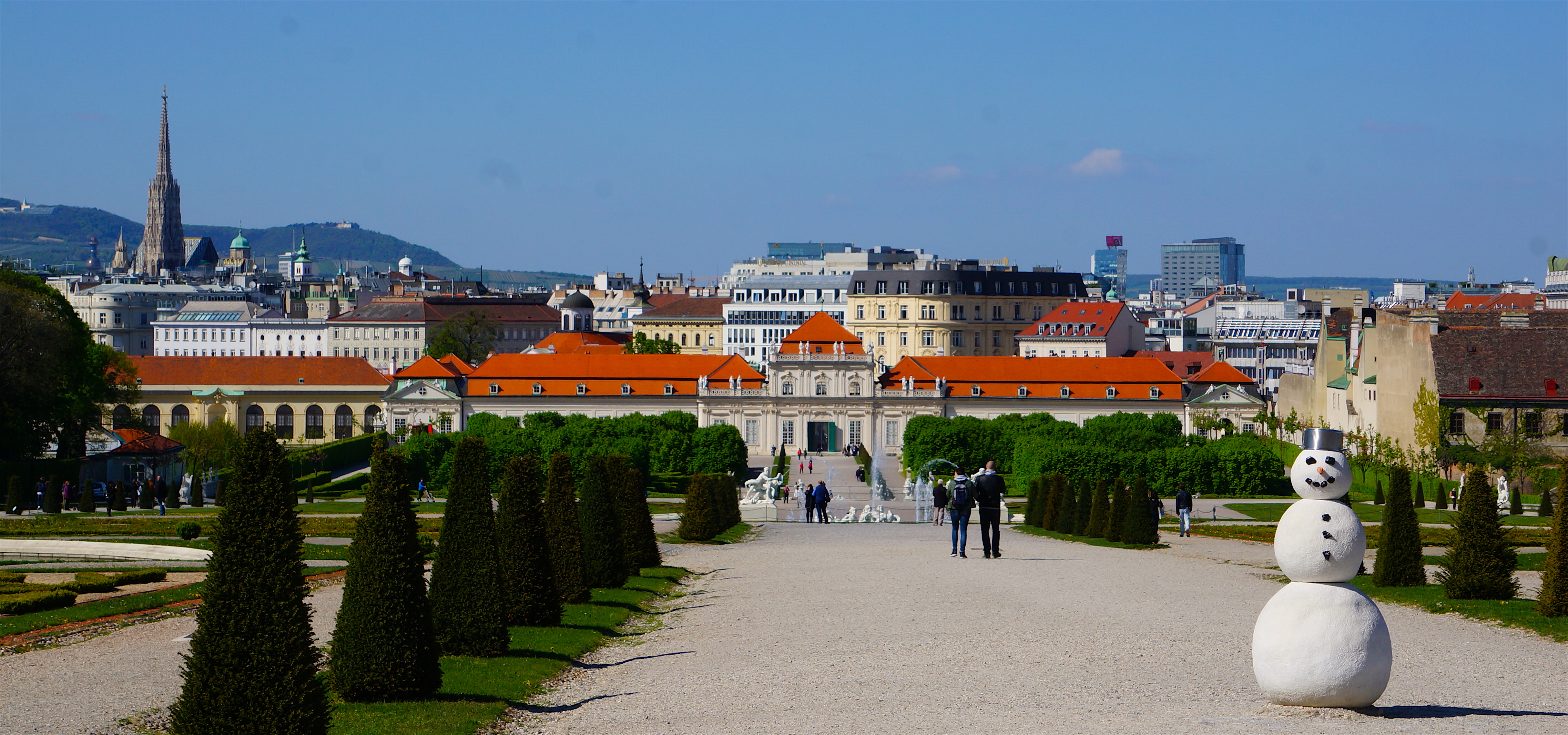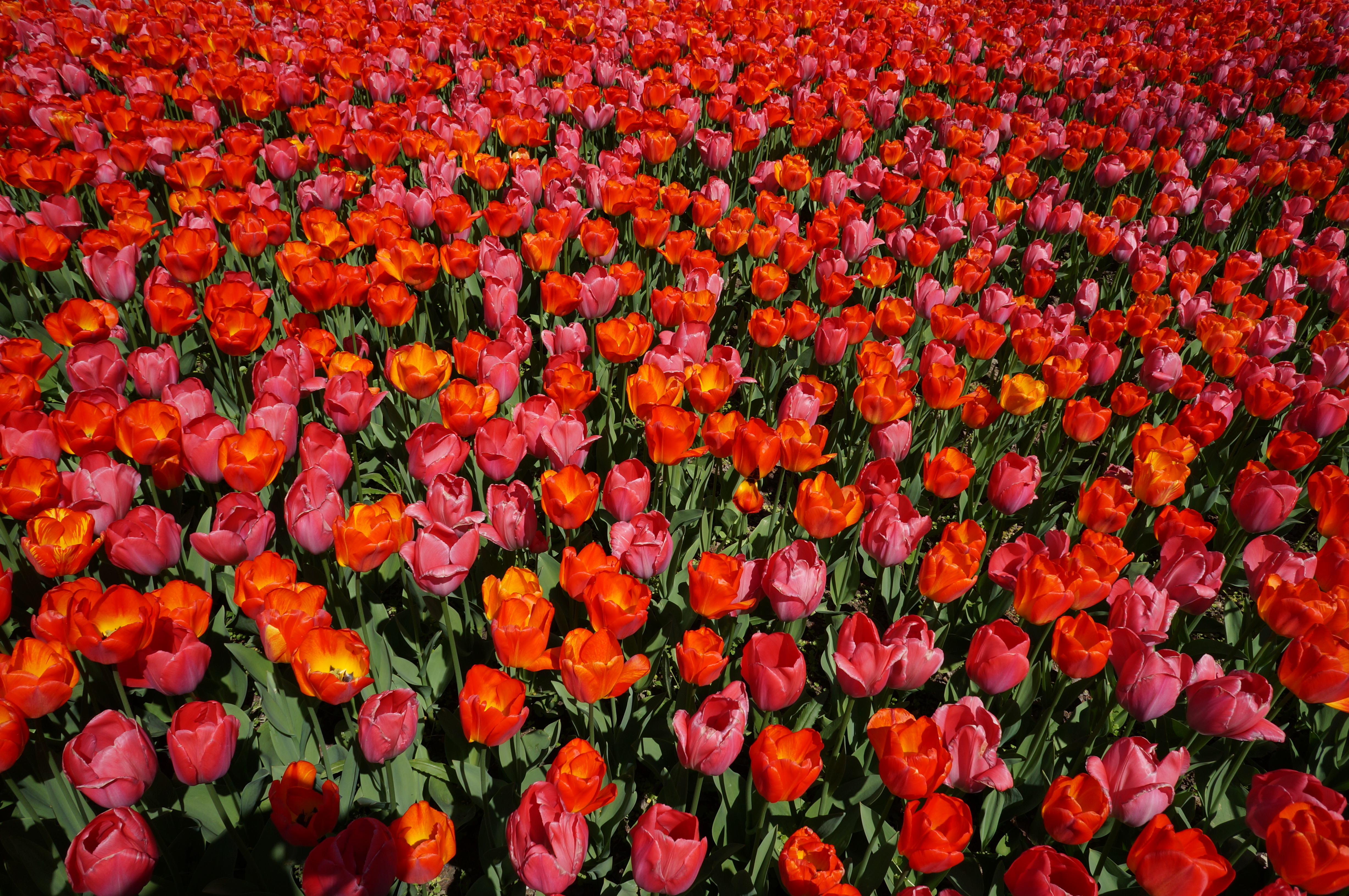EGU 2016
The European Geosciences Union (EGU) General Assembly is held every year to bring together geoscientists to present and discuss their work. I went along to hear talks and look at posters in the Cryospheric Sciences sessions among others. I only attended the conference for 4 out of 6 days, so here is my rundown of what I saw and liked, and my experience of presenting my poster at EGU.

Vienna (taken from the Austrian Gallery Belvedere), including St. Stephen’s cathedral on the skyline… and a snowman in the foreground.
Before EGU, big conferences scared me. Bad experiences at smaller conferences made me apprehensive and the thought of spending all day around 12,000 people, some of which I really wanted to like me, was not how I wanted to spend my time in Vienna. Vienna is a beautiful city. So why was I spending the majority of my time in a conference centre trying to outwardly express confidence and competency whilst desperately trying to keep it together on the inside?
Spoiler alert: I actually really enjoyed EGU. This is not a blog post describing how I had a miserable time at my first big conference, promise. The talk and poster sessions were fantastic, presenting my poster was constructive and somewhat enjoyable, and I spent the remaining time chilling out with old and new acquaintances. AND I still had time to see Vienna.
The talks took up most of the days, organised into sessions that consisted of similar topics. I mainly attended the sessions which were associated with glacier dynamics. Of particular interest were several talks on supraglacial lake drainage and its significance, which has been tackled with modelling and direct observations. In some instances, lake drainage has had little control on the pressure environment at the glacier bed (Mendenhall glacier, Alaska) because there is an efficient drainage system in place that quickly adjusts to subseasonal changes. Pressure build up occurs in the system when water cannot escape (e.g. simulated at Recovery Ice Stream, NW Antarctica) and can be advected downglacier (e.g. Paakitsoq, a land-terminating region of W Greenland).
The broad session on ice shelves and tidewater glaciers was excellent with consistently good talks throughout. The talks that caught my interest most were on calving styles (e.g. buoyant flexure at Helheim, Greenland), the buttressing effect of ice melange monitored using UAVs, and a borehole bed pressure record at Bowdoin glacier (N Greenland) showing an interesting anti-correlation between bed water pressure and surface velocity.
The poster sessions were held in the early evenings after the talks with wine and beer. It was generally quite a relaxed atmosphere, but incredibly busy at times! My poster (above) went down really well and I had a lot of good feedback, both constructive and encouraging. I definitely prefer doing a poster instead of a talk because, although you reach more people with a talk, the one-on-one interaction with people is so helpful.
On Wednesday I took the day off to explore the city as I had never been to Vienna before. We were lucky with the weather and went to the Austrian Gallery Belvedere, which has some beautiful gardens and a handful of work by Gustav Klimt amongst others. Taking a break from such an intense conference was definitely needed, and I can recommend it!
By Thursday I was tempted to extend my stay and re-book my flight back to Edinburgh for Saturday. But I had to go as Svalbard is calling with more fieldwork in the pipeline. In all, I had a great time at EGU and was pleasantly surprised by how much I enjoyed it. Yes, big conferences can be intimidating and intense. My previous impression was that you had to attend everything possible in order to make the most of your time at conferences. Now I realise that taking time for yourself is key. You can afford to be picky and not feel guilty about it.

Flowers in Vienna, taken on my day off from the conference. Glorious weather! (April, 2016)
Further reading
Listed below are corresponding journal papers to the research I mentioned earlier (in instances where papers have been published) .
Gimbert et al. (2016) - lake drainage at Mendenhall glacier, Alaska
Banwell et al. (2014); Dow et al. (2015) - modelling lake drainage
Wagner et al. (2016) - calving mechanisms (i.e. buoyant flexure, the ‘footloose’ mechanism) at Helheim glacier, Greenland
